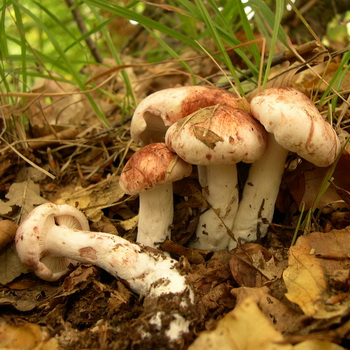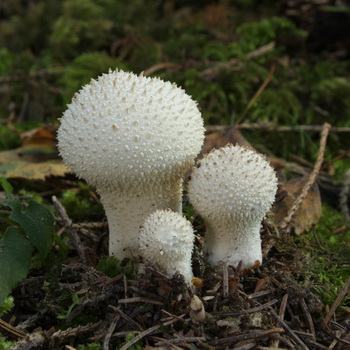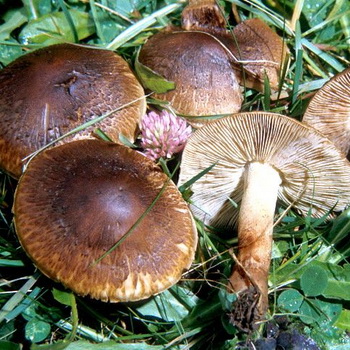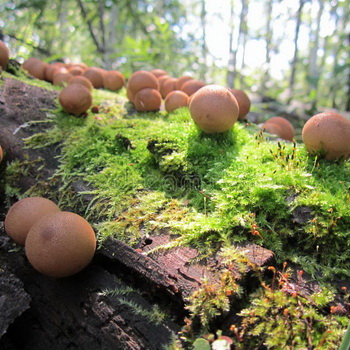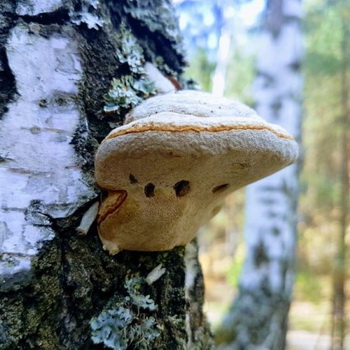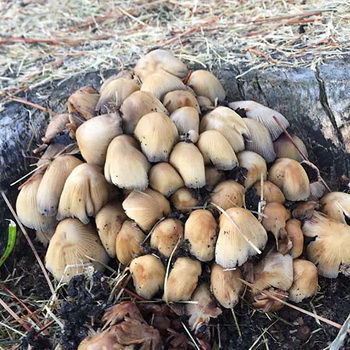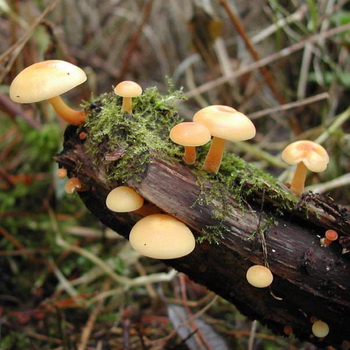Forest mushrooms on thin legs
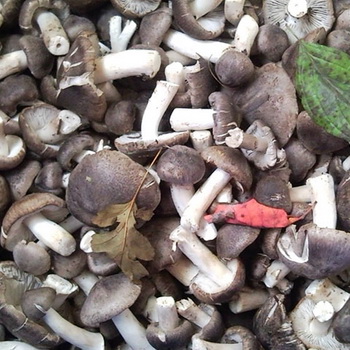
Thin Russula
Russula green (Russula aeruginea).
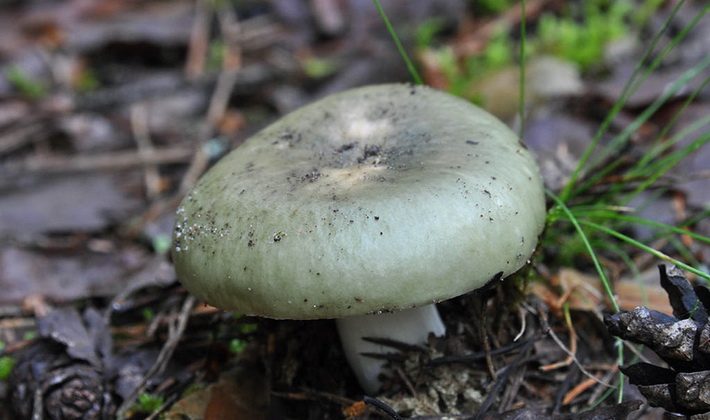
Family: Russula (Russulaceae)
Season: beginning of July - end of September
Growth: singly and in groups
Description:
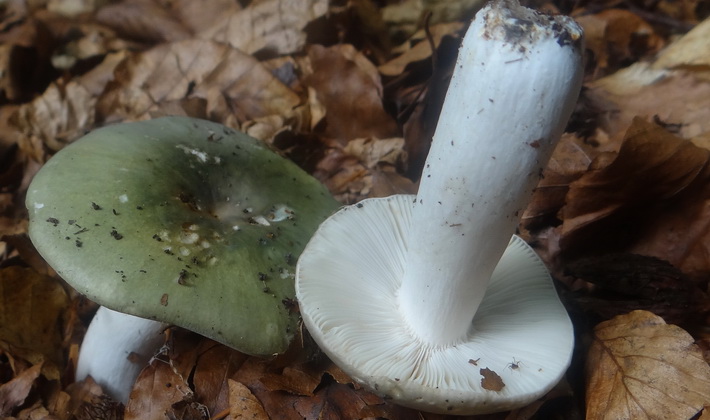
The leg is cylindrical, white, with rusty-brown specks. The skin is easily removed by 2/3 of the radius of the cap.
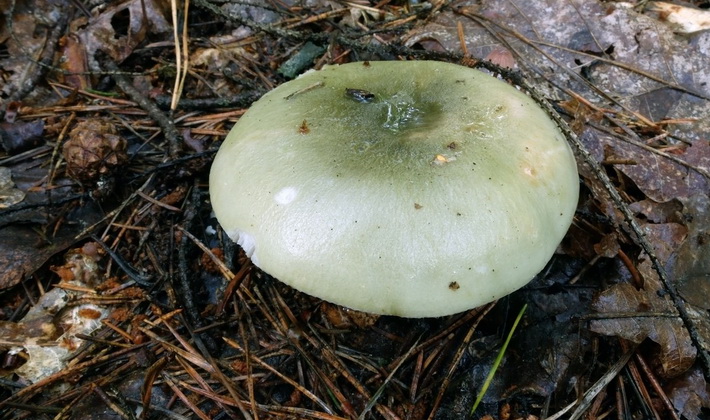
The hat is green, convex or dented, sticky.
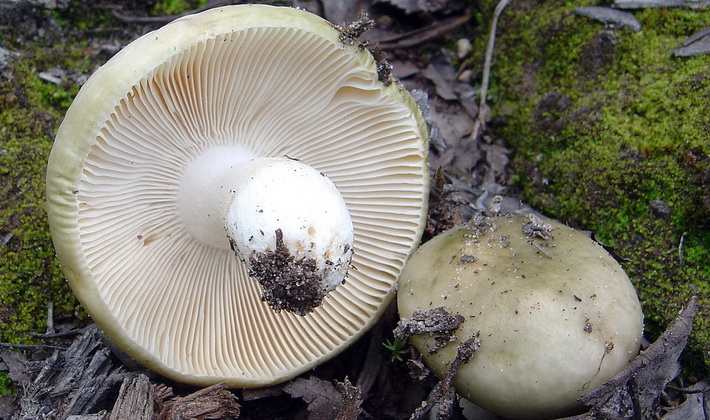
The flesh is brittle, white, with a bitter taste. The edge of the hat is furrowed. The plates are frequent, overgrown, white, then creamy yellowish, sometimes with rusty spots.
A good edible mushroom, used fresh (it is recommended to boil to remove bitterness) and salted. It is better to collect young mushrooms with the edge down.
Ecology and distribution:
It grows in deciduous, mixed (with birch), sometimes in coniferous forests, in young pine-birch, on sandy soils, in grass, in moss, on the edges, near paths.
Russula yellow (Russula claroflava).
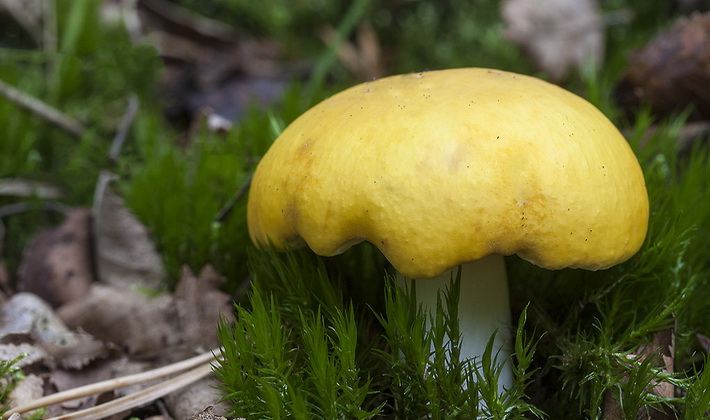
Family: Russula (Russulaceae)
Season: mid July - end of September
Growth: singly and in small groups
Description:
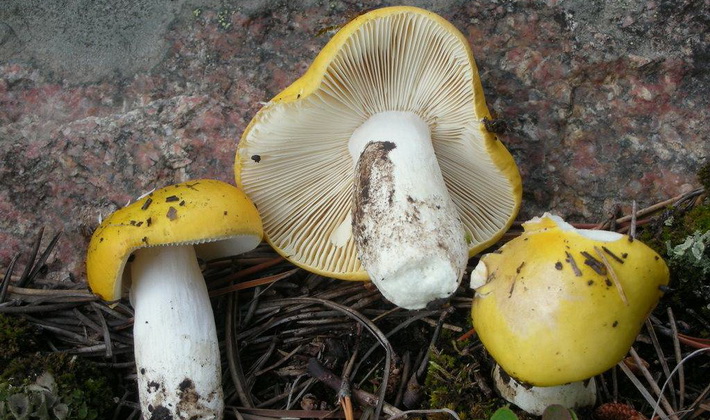
The plates are grown, frequent, yellow.
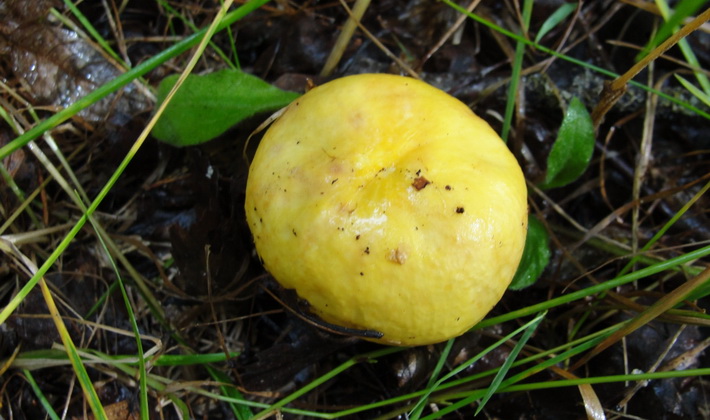
The hat is bright yellow, dry, convex or flat.
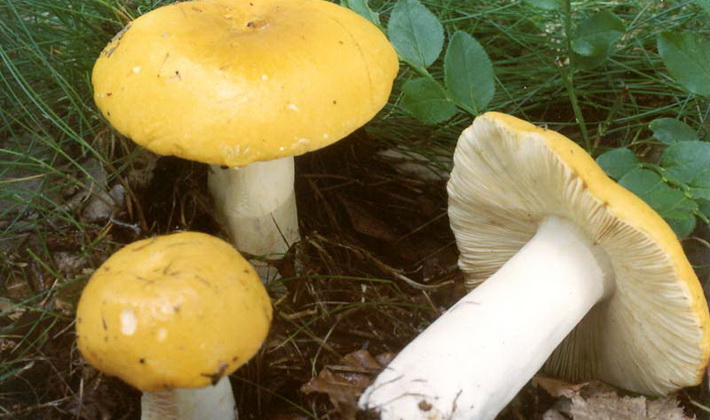
The leg is white, smooth, turning gray with age. The skin is well removed only along the edge of the hat. The pulp is cotton-like, white, orange-yellow under the skin, darkens on the cut.
This edible mushroom on a thin white leg is used fresh (after boiling) and salted. When boiling, the flesh darkens. It is better to collect young mushrooms with the edge down.
Ecology and distribution:
It grows in moist deciduous (with birch) and pine-birch forests, on the outskirts of marshes, in moss and blueberries. Forms mycorrhiza with birch.
Russula blue-yellow (Russula cyanoxantha).

Family: Russula (Russulaceae)
Season: mid-June - end of September
Growth: singly and in groups
Description:
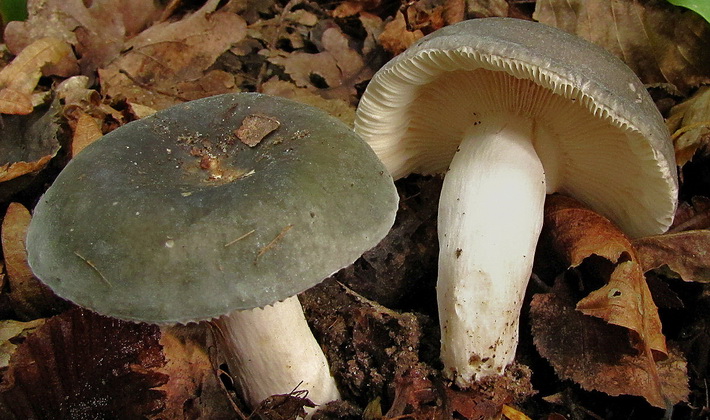
The hat is dry or sticky, in the center it is greenish or brownish, along the edge it is violet-gray, violet-purple or grayish-green. The skin is removed at 2/3 of the radius of the hat.

The leg is first dense, then hollow, white.
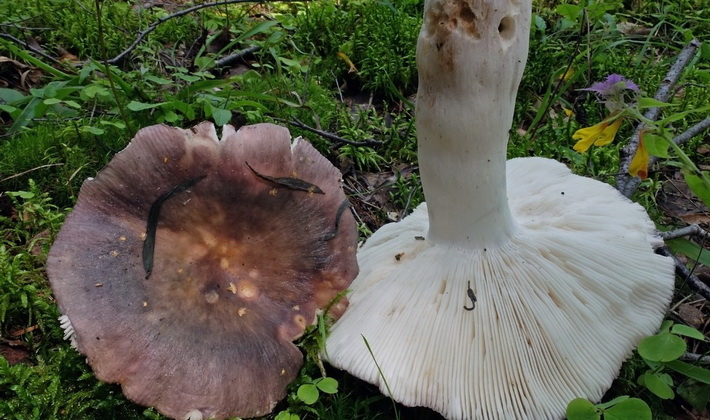
The pulp is white, sometimes with a violet tint, strong, not caustic. The plates are frequent, wide, sometimes branched, silky, white. The pulp in the leg is cotton-like.
The best of russula. It is used fresh (after boiling), salted and pickled.
Ecology and distribution:
It grows in deciduous and mixed forests (with birch, oak, aspen).
The Russula is burning-caustic (Russula emetica).
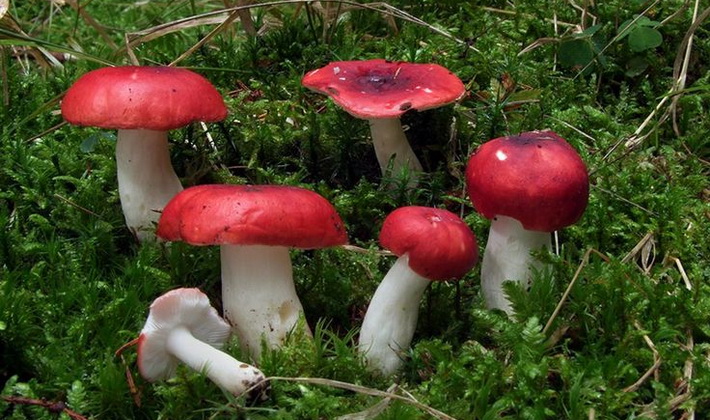
Family: Russula (Russulaceae)
Season: mid July - October
Growth: singly and in small groups
Description:
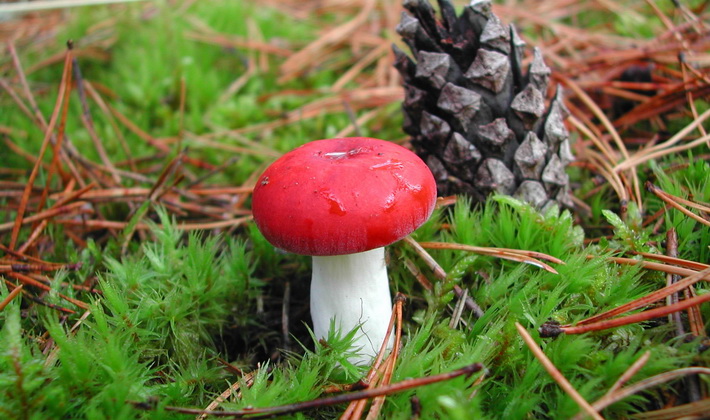
The hat is convex, outstretched, slightly depressed, sticky, shiny, red. The cap of young mushrooms is spherical.
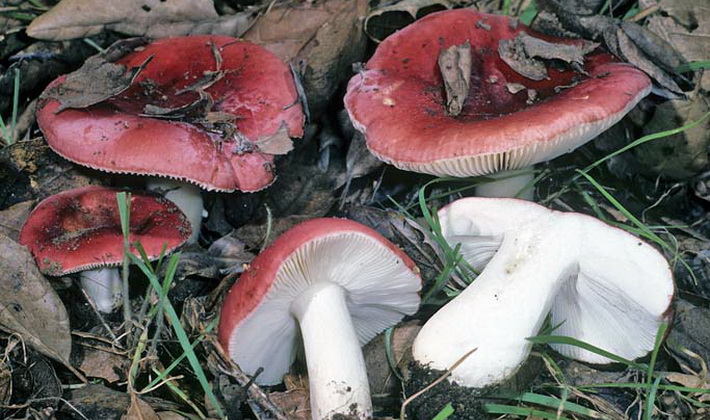
The pulp is brittle, white, reddish under the skin, with a burning taste. The skin is easily removed.
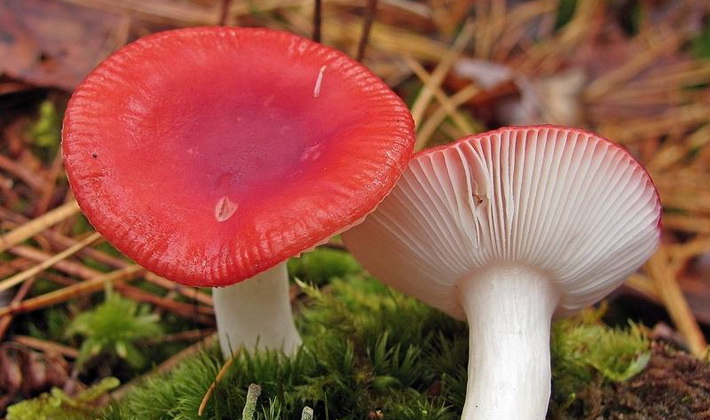
Medium-frequency plates, wide, grown or almost free. The leg is cylindrical, brittle, white.
This small mushroom on a thin stalk is inedible due to its bitter taste. According to some reports, it can cause an upset gastrointestinal tract.
Ecology and distribution:
It grows in deciduous and coniferous forests, in damp places, near marshes.
Russula gall (Russula fellea).
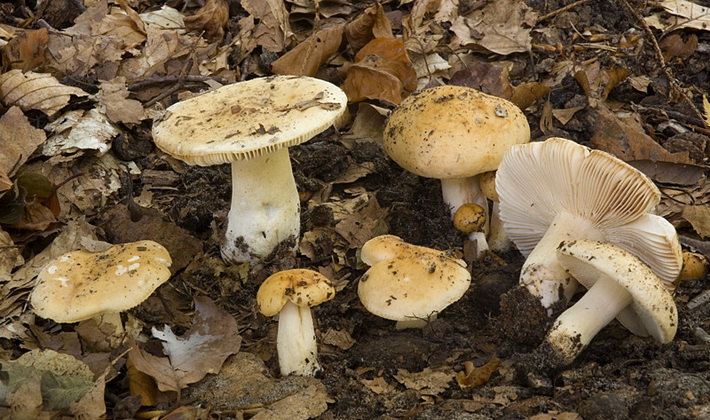
Family: Russula (Russulaceae)
Season: June - September
Growth: singly and in small groups
Description:
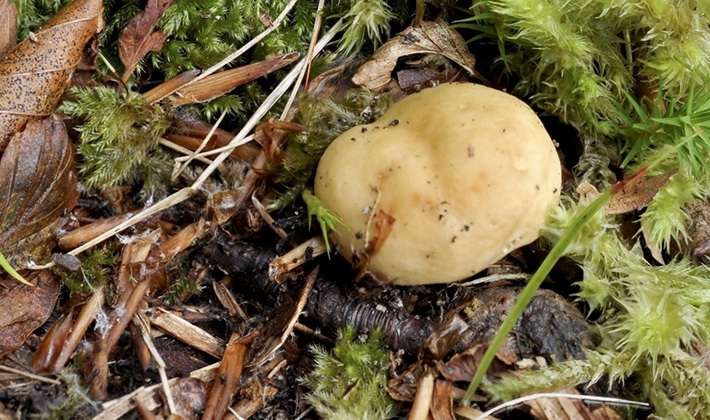
The hat is initially convex, then half-spread, indented in the center, straw-yellow. The edge of the hat is first smooth, then striped.
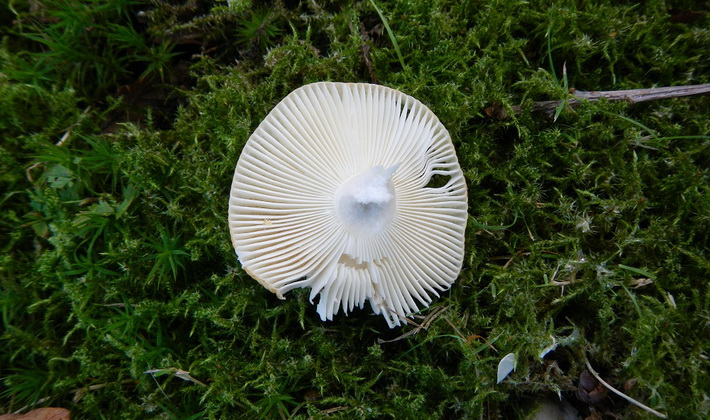
The flesh is yellowish-white fawn, pungent, bitter. The plates adhered to the pedicle, frequent, thin, first whitish, then light yellow.
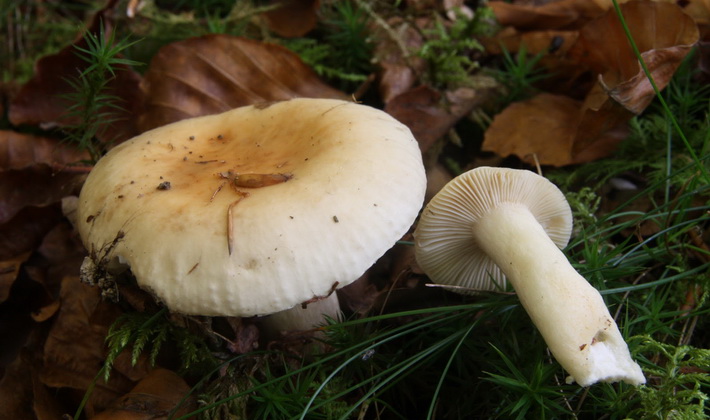
The leg is flat, loose, to old age with a hollow, whitish, straw-yellow below. The skin is easily removed only at the edges.
The information about edibility is contradictory. According to some reports, it can be used salted after prolonged soaking.
Ecology and distribution:
It forms mycorrhiza with beech, less often with oak, spruce and other tree species. It grows in various types of forests on drained acidic soils, often in hilly and mountainous terrain.
Russula fragile (Russula fragilis).
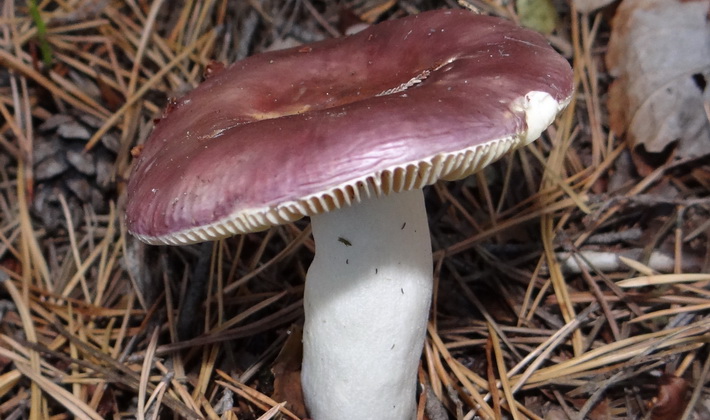
Family: Russula (Russulaceae)
Season: mid August - October
Growth: singly and in small groups
Description:
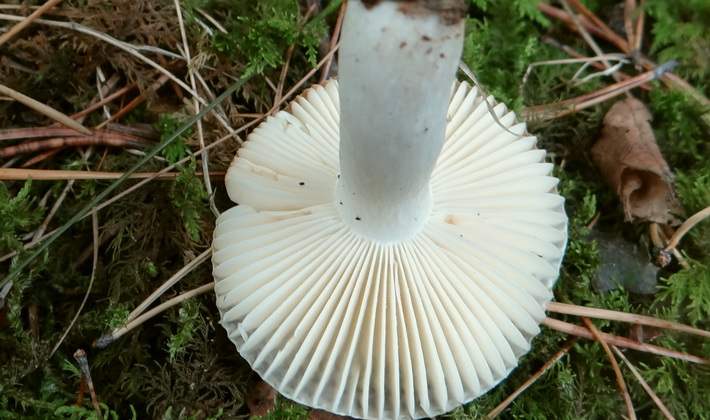
The plates are narrowly grown, relatively rare. The flesh is white, very brittle, with a pungent taste.
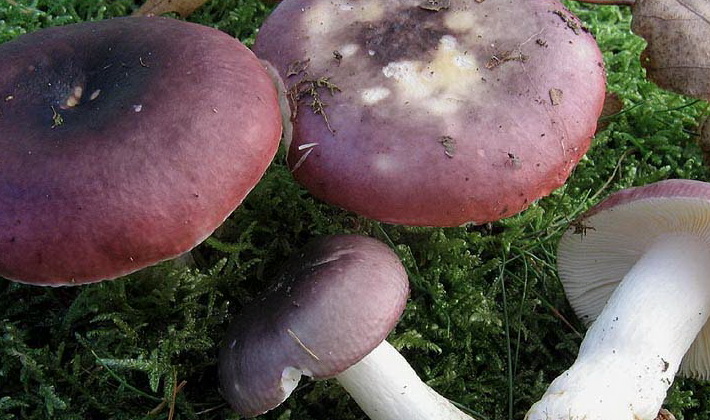
The hat is purple or purplish red, sometimes olive green or even light yellow, convex or indented.
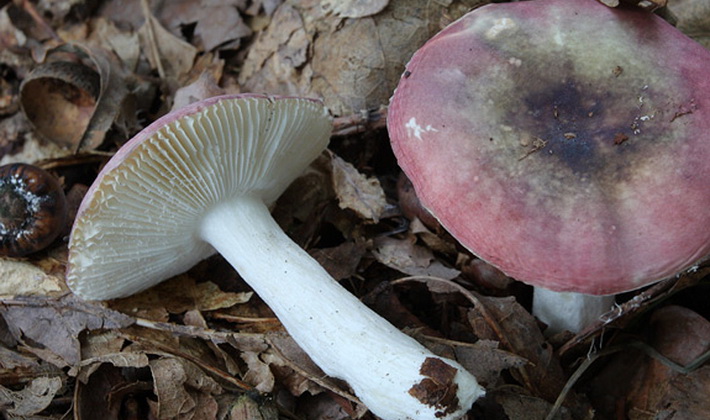
The leg is white, brittle, slightly club-shaped.
The information about edibility is contradictory. According to domestic data, it can be used salted after boiling with draining the broth. In Western sources it is considered inedible.
Ecology and distribution:
It grows in coniferous and deciduous (with birch) forests, in damp places, at the edges, in shrubs.
Russula mairei, poisonous.
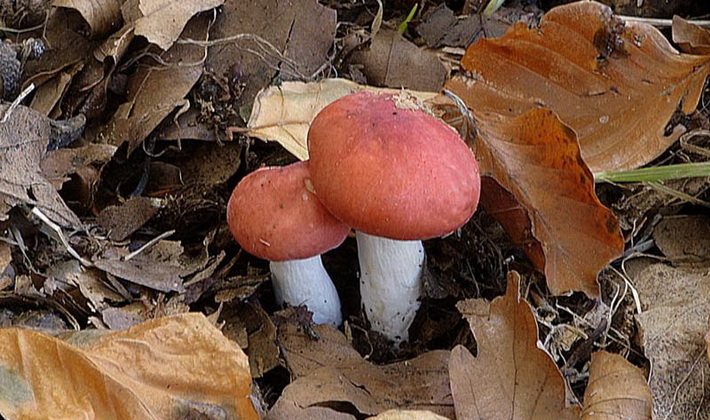
Family: Russula (Russulaceae).
Season: summer autumn
Growth: in groups and singly
Description:
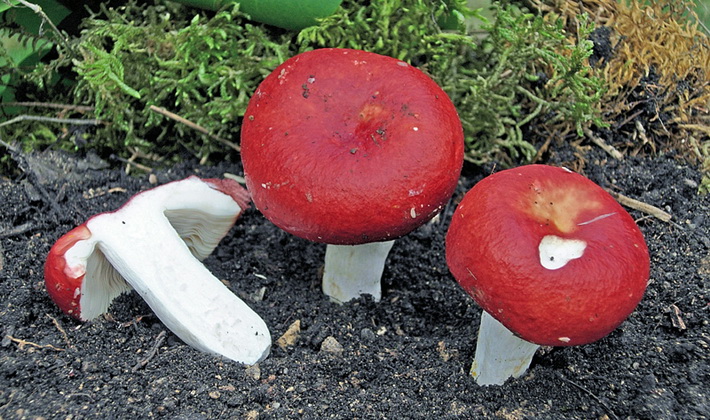
The pulp is dense, brittle, white, with the smell of honey or coconuts.
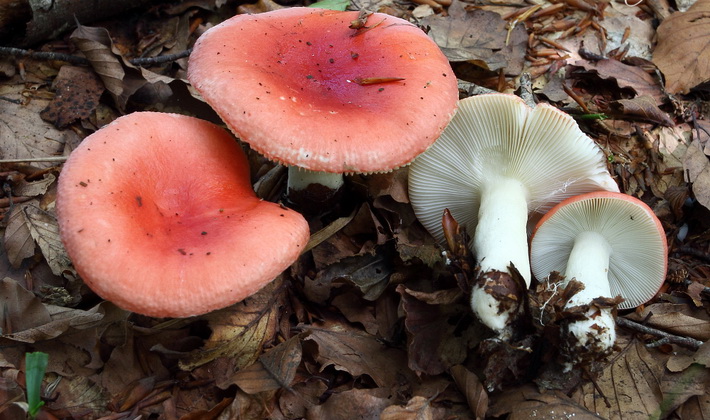
The hat is bright scarlet, convex or flat, sticky in wet weather.
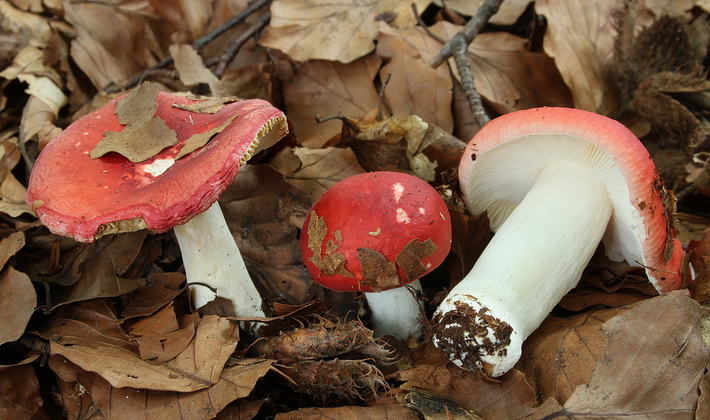
Leg is smooth, whitish, slightly club-shaped. Lamellae are relatively rare, fragile, narrowly grown, white with bluish.
The most poisonous of russula; causes gastrointestinal upsets.
Ecology and distribution:
It grows in deciduous and mixed forests on fallen leaves and even rotten trunks, on drained soil. Widely distributed in beech forests of Europe and adjacent areas of Asia.
Russula pale ocher (Russula ochroleuca).
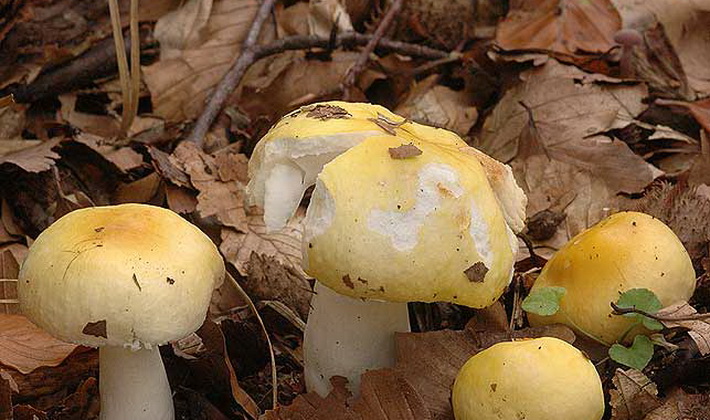
Family: Russula (Russulaceae)
Season: end of August - October
Growth: singly and in groups
Description:
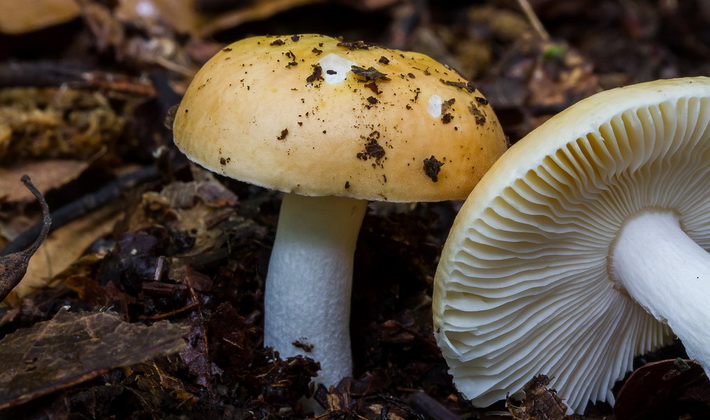
The hat is smooth, ocher-yellow, convex, then prostrate.
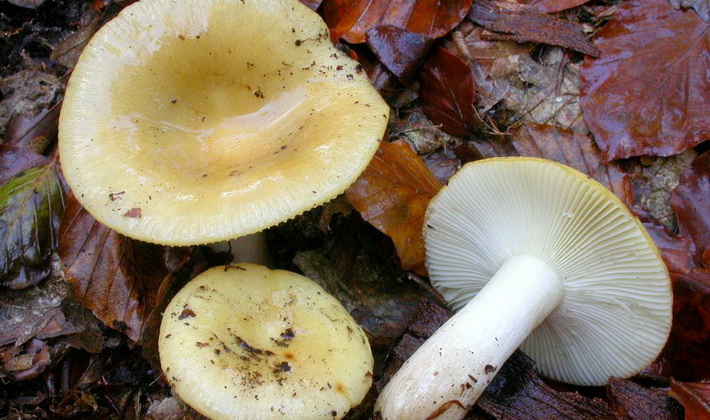
The pulp is dense, brittle, white, slightly darkens on the cut, with a pungent taste.
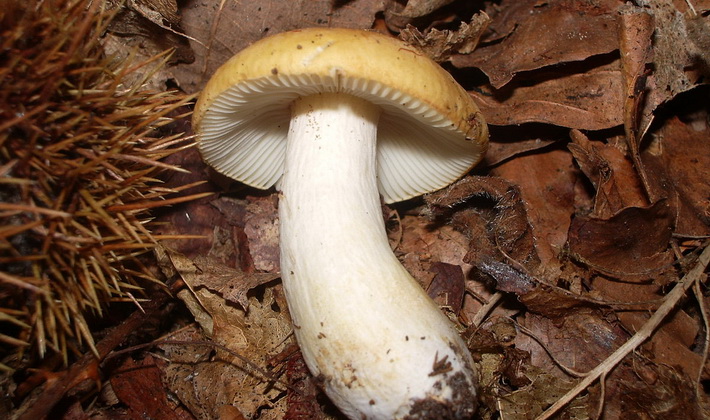
The leg is barrel-shaped, strong, whitish, with a brown tinge. The base of the leg turns gray with age. The laminae are overgrown, relatively frequent, white.
Conditionally edible mushroom. It is used fresh (after boiling) and salted.
Ecology and distribution:
This mushroom on a thin leg with a brown tint grows in coniferous (spruce) and moist broad-leaved (with birch, oak) forests, in moss and on the litter. More common in the southern regions of the forest zone.
Russula marsh (Russula paludosa).

Family: Russula (Russulaceae)
Season: mid July - October
Growth: singly and in groups
Description:
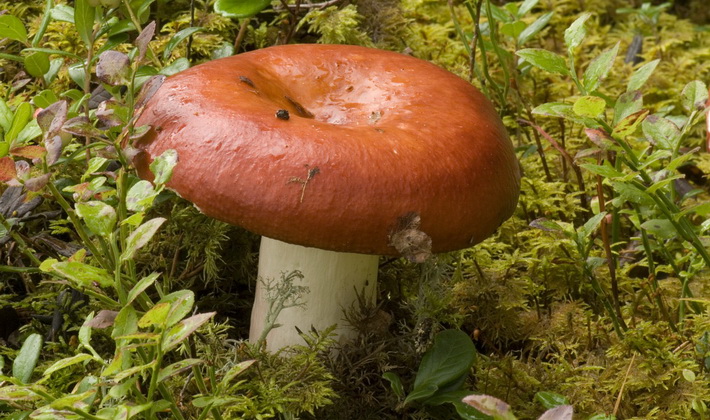
The cap is fleshy, convex, slightly depressed in the center, with a blunt edge. The lamellae are weakly grown, frequent, sometimes branched, white or buffy.
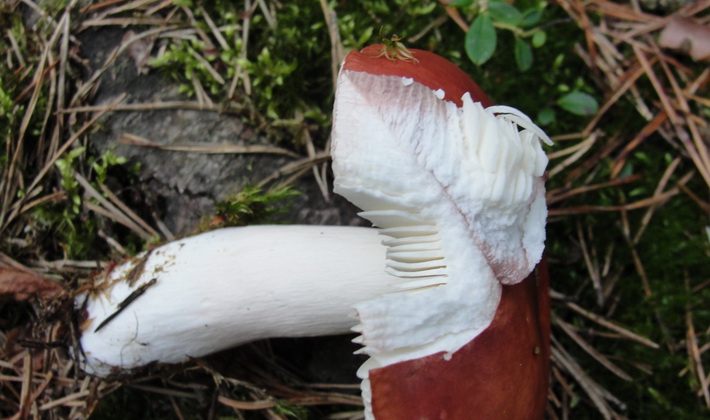
The peel of the hat is dry, dark red in the center, bright pink along the edge. The flesh is white, dense in young mushrooms, then loose, with a fruity smell.
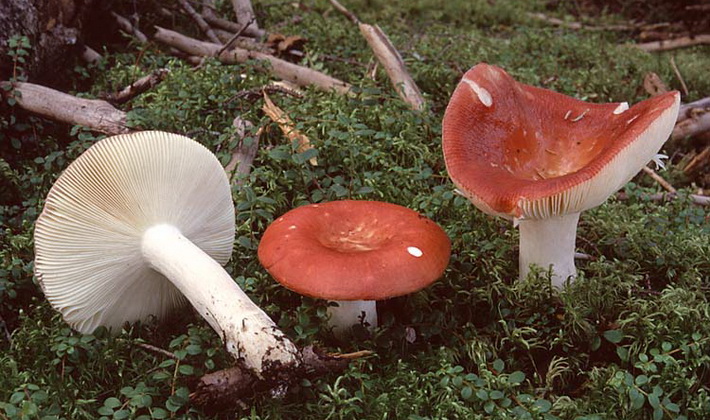
The foot is club-shaped or fusiform, solid, sometimes hollow, felt, pink or white.
Edible mushroom. It is used fresh (after boiling) and salted.
Ecology and distribution:
It grows in coniferous (with pine) and mixed (pine-birch) forests, in damp places, on the outskirts of swamps, on sandy peat soils, in moss, in blueberries.
Russula maiden (Russula puellaris).
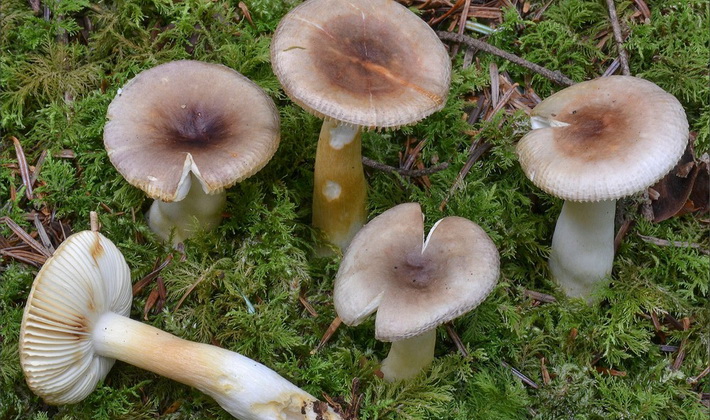
Family: Russula (Russulaceae)
Season: mid August - October
Growth: in groups and singly
Description:
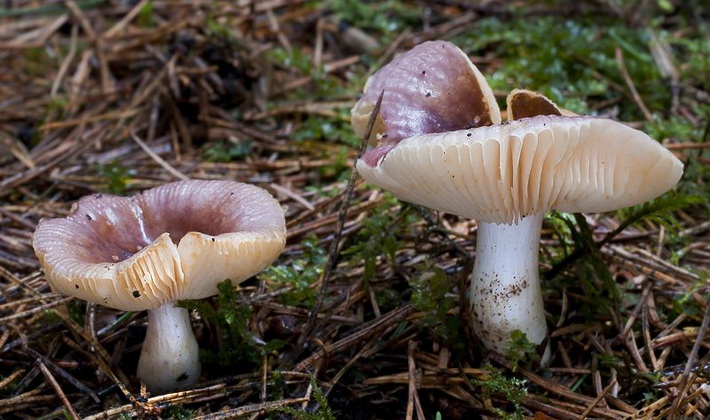
The flesh is brittle, whitish or yellowish. The cap is first convex, then spread out, sometimes slightly depressed, yellowish or brownish-gray. The edge of the cap is thin, ribbed.
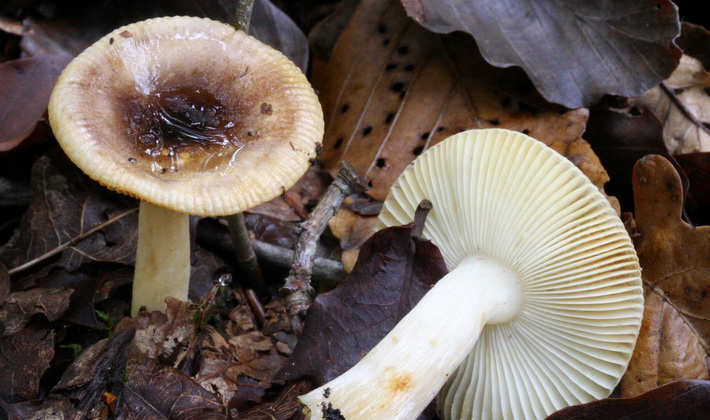
Leg slightly extended to base, solid, then hollow, brittle, whitish or yellowish.
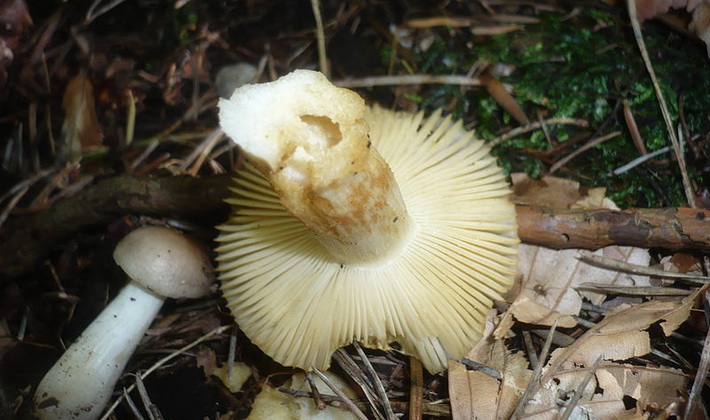
Plates are frequent, thin, adherent, white, then yellow.
Edible mushroom. Used fresh (after boiling).
Ecology and distribution:
It grows in coniferous and less commonly in deciduous forests.
Russula turkish (Russula turci).
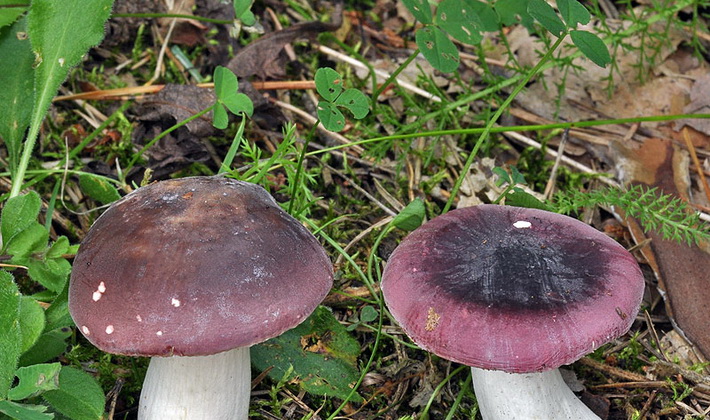
Family: Russula (Russulaceae)
Season: July-October
Growth: singly and in groups
Description:

The hat is wine red, black or orange, shiny. The shape of the hat is first hemispherical, then depressed. The plates are grown, rare, white or yellowish.
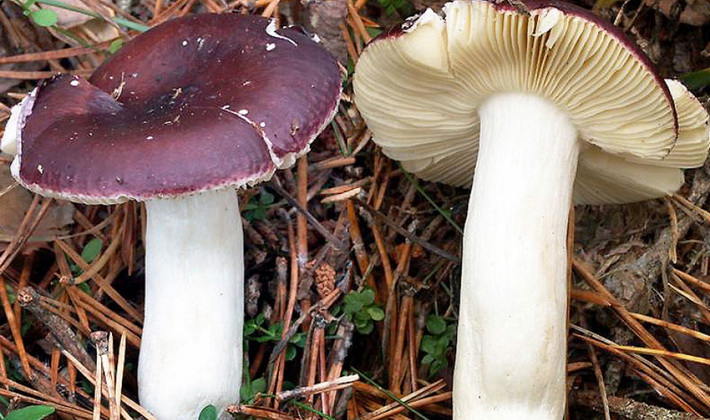
The leg is club-shaped, white.

The pulp is brittle, white with a fruity odor.
Edible mushroom.
Ecology and distribution:
It is found in the mountain coniferous forests of Europe and North America. It forms mycorrhiza with pine and fir.
Russula food (Russula vesca).
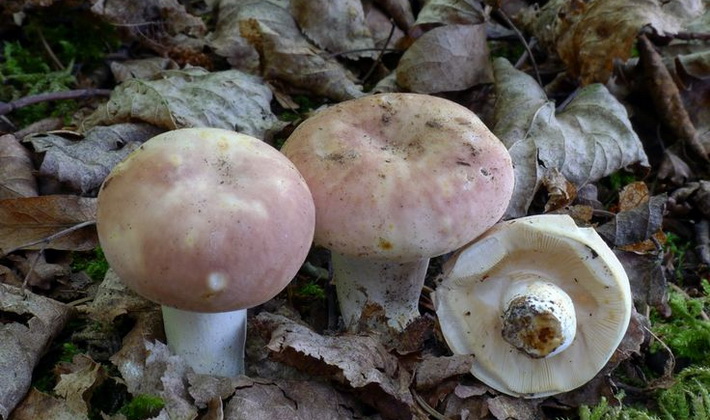
Family: Russula (Russulaceae)
Season: mid July - end of September
Growth: singly and in small groups
Description:
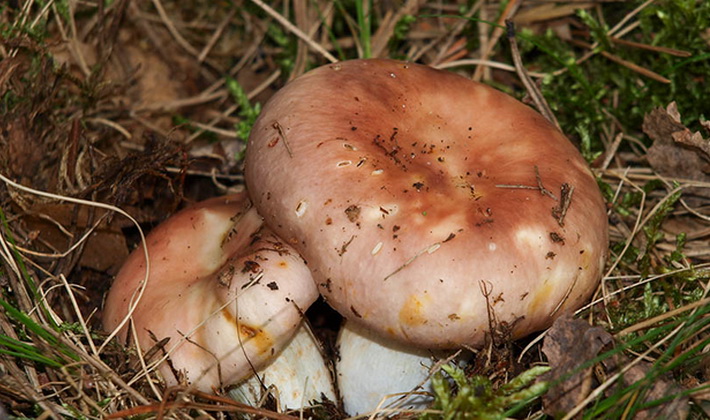
The hat is flat-convex, pink, reddish, brownish, unevenly colored. The plates are frequent, of the same length, white or yellowish.
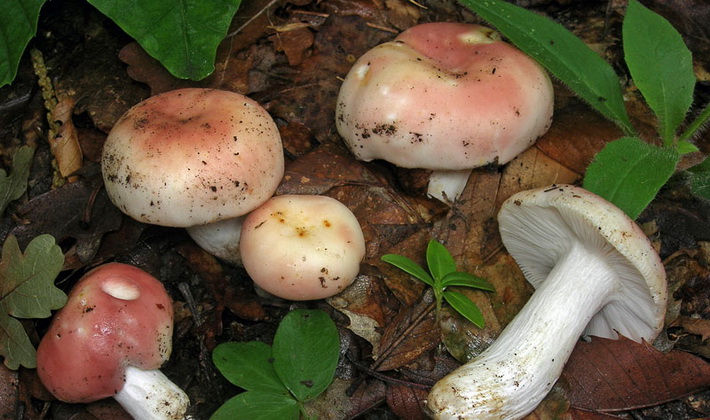
Leg, dense, narrowed to the base, white. The skin does not reach 1-2 mm to the edge of the cap, is removed to half.
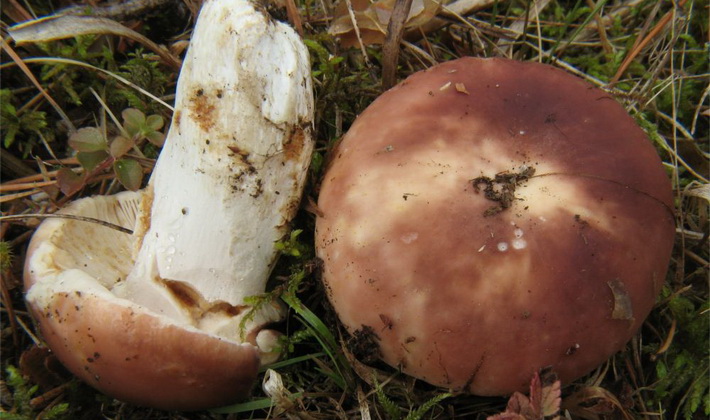
The flesh is whitish, dense, pungent or somewhat pungent in taste. The lamellae are frequent, narrowly grown, creamy white, sometimes forked.
One of the most delicious russula. It is used fresh (after boiling) in the second course, salted, pickled, dried.
Ecology and distribution:
It grows in deciduous and broad-leaved (with birch, oak) forests, less often in conifers, in bright places, in the grass.
Russula is greenish (Russula virescens).

Family: Russula (Russulaceae)
Season: mid July - mid October
Growth: singly and in groups
Description:
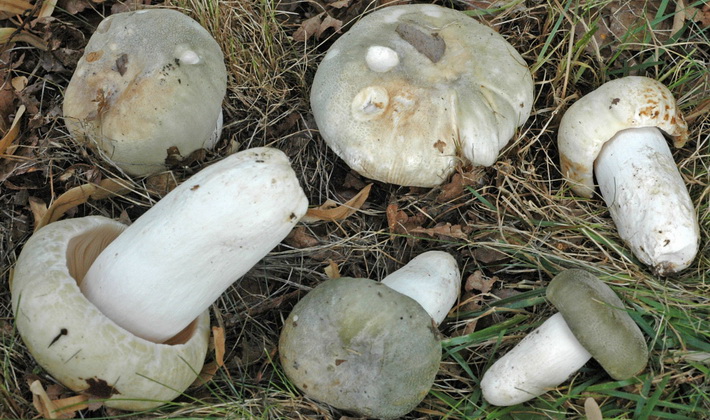
The leg is white, with brownish scales at the base.
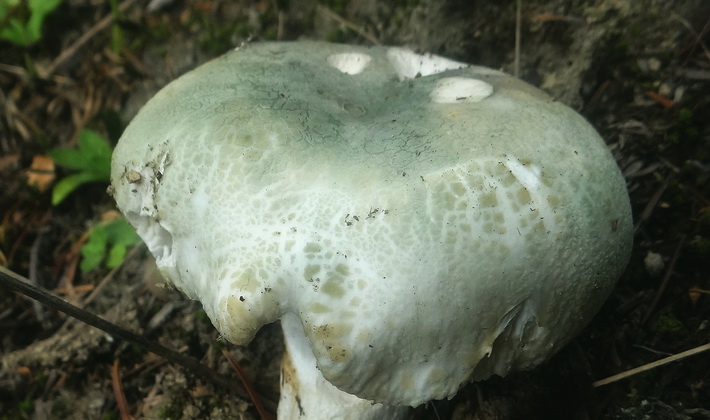
The hat is fleshy, dull, yellow or blue-green, in young mushrooms it is hemispherical. The hat of mature mushrooms is open. The skin cannot be removed, it often cracks.
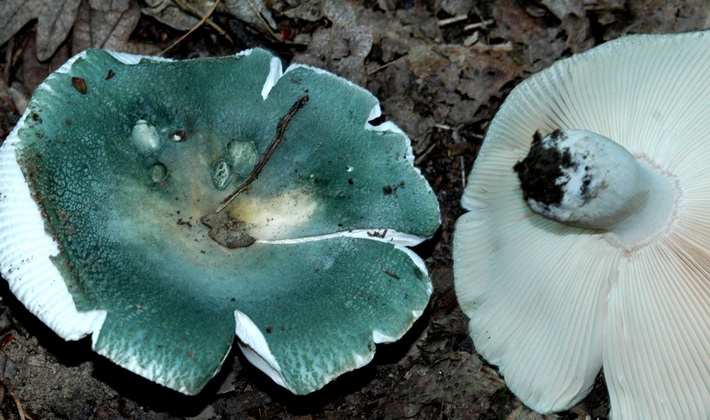
The flesh is whitish, dense, pungent or somewhat pungent in taste. The lamellae are frequent, narrowly grown, creamy white, sometimes forked.
One of the most delicious russula. It is used fresh (after boiling), salted, pickled, dried.
Ecology and distribution:
It grows in deciduous, mixed (with birch, oak) forests, in bright places. Distributed in the southern regions of the forest zone.
Russula browning (Russula xerampelina).
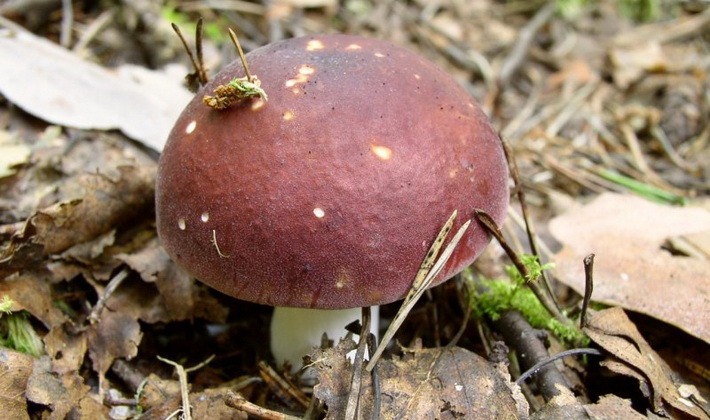
Family: Russula (Russulaceae)
Season: mid July - October
Growth: singly and in small groups
Description:
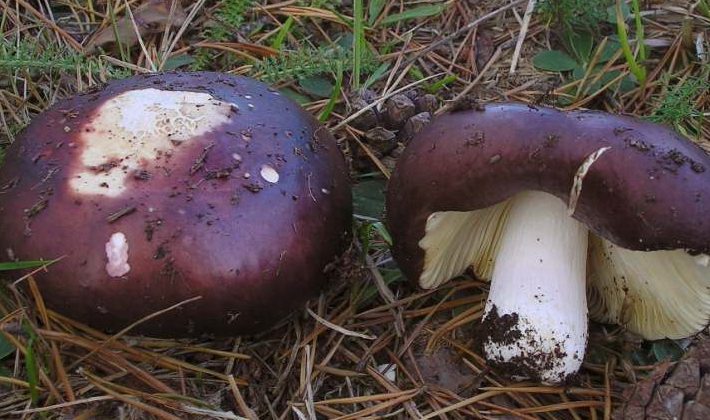
The hat is wide, burgundy, brown or olive in color, darker in the center.

The flesh is white, brownish at the cut, with a shrimp or herring smell. Lamellas are grown, white, browning with age.
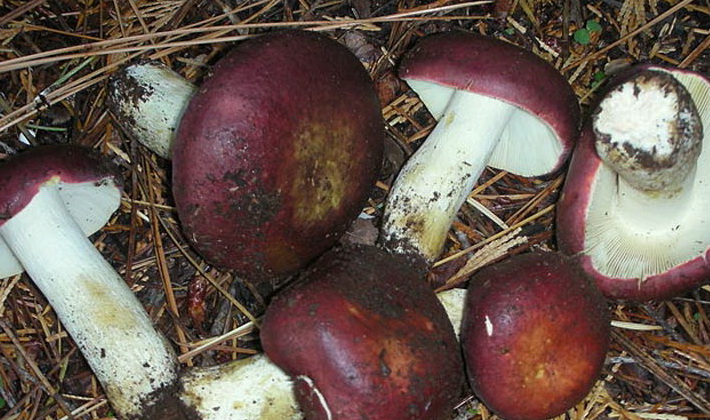
The leg is white, sometimes with a reddish tint, with age it becomes buffy or brownish. The caps of young mushrooms are hemispherical.
It is used salty, pickled, sometimes fresh (after boiling to remove an unpleasant odor).
Ecology and distribution:
It grows in coniferous (pine and spruce), deciduous (birch and oak) forests.
Other mushrooms with thin legs
White boot (Russula delica).
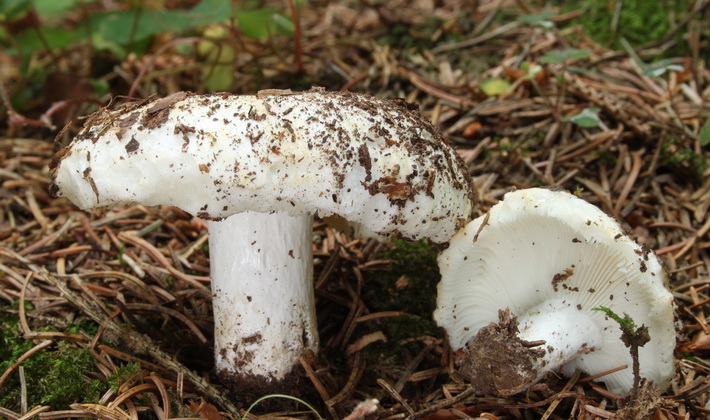
Family: Russula (Russulaceae)
Season: mid July - October
Growth: in groups
Description:
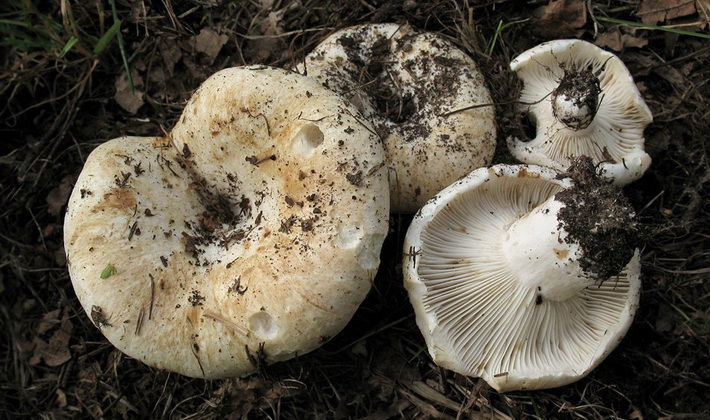
The cap is initially convex, white, with funnel-shaped appearance with age, sometimes cracking. Lamellae are down-running, narrow, white with a bluish-greenish tint.
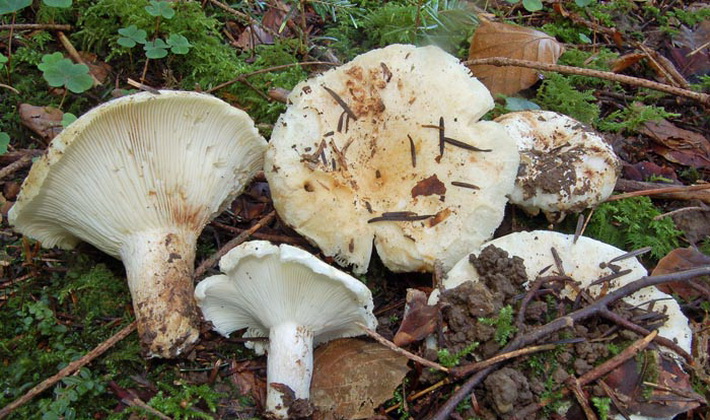
The leg is dense, white, slightly narrowed below and slightly browning.
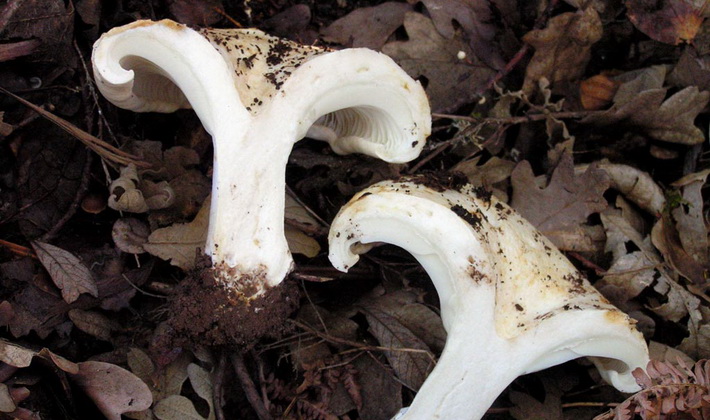
The pulp is white, dense, friable.
A good edible mushroom, used salted (after boiling).
Ecology and distribution:
This mushroom with a thin long stalk grows in deciduous and mixed (with birch, aspen, oak) forests, less often in coniferous (with spruce). A significant part of the life cycle of the fruiting body goes underground; only tubercles are visible on the surface.
The blackening of the boot (Russula nigricans).
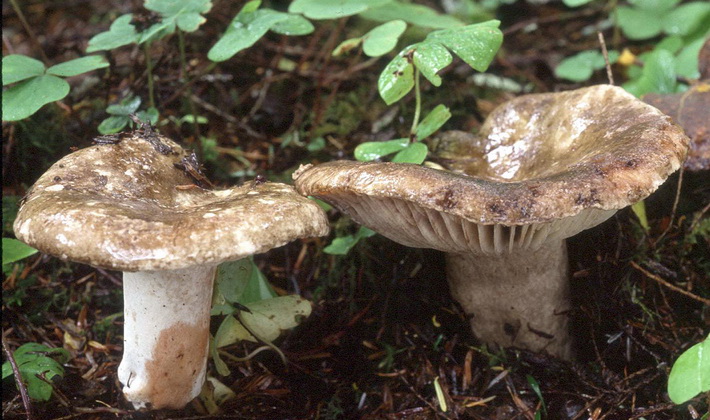
Family: Russula (Russulaceae)
Season: mid July - October
Growth: in groups
Description:
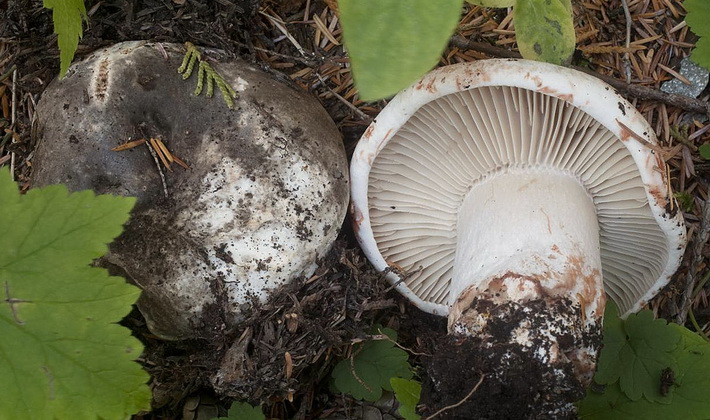
The cap is flattened in the center, grayish in youth, then brownish. Lamellae are rare, thick, overgrown, yellowish, then brownish, later almost black.
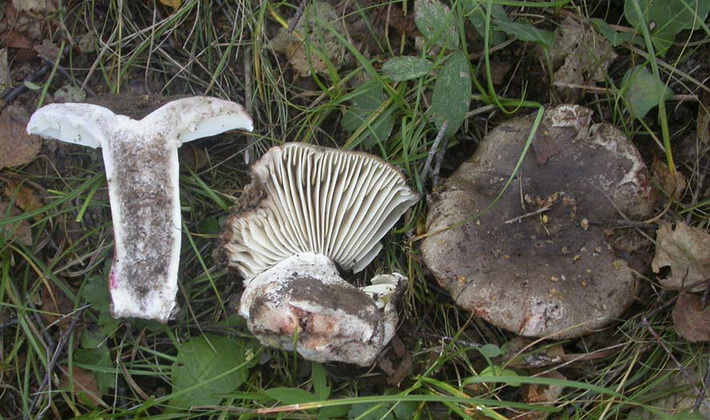
The pulp on the cut first turns red, then blackens, the smell is fruity, the taste is sharp.
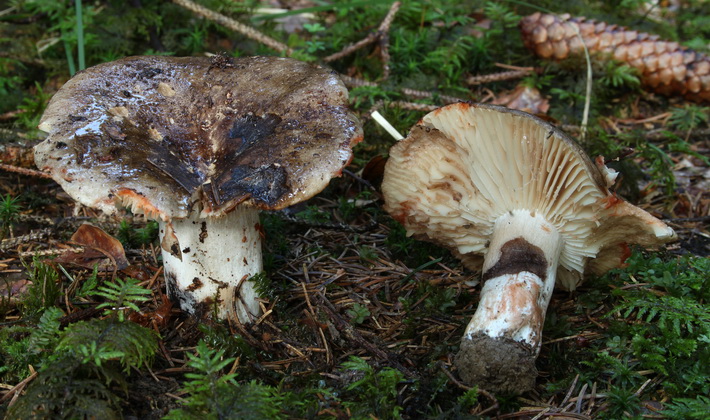
The leg is firm, first light, then browning and blackening.
Conditionally edible mushroom. Used salted after boiling for 20 minutes. Blackens in the pickle.
Ecology and distribution:
Grows in coniferous (with spruce), mixed, deciduous and broad-leaved (with birch, oak) forests
Valui (Russula foetens).
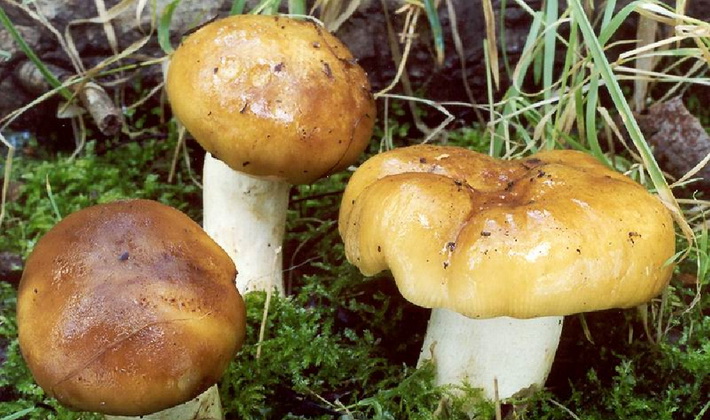
Family: Russula (Russulaceae)
Season: beginning of July - October
Growth: singly and in small groups
Description:
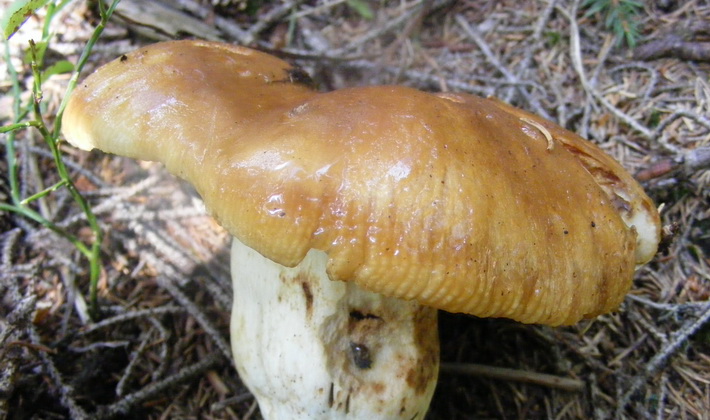
The cap of young mushrooms is almost spherical, with the edge pressed to the leg, mucous; the cap is convex, sometimes spread and pressed in the middle, curved, with an edge, dry or slightly sticky, brown. The cap is often corroded by insects and slugs. The edge of the cap is heavily ribbed, sometimes cracked.

The pedicle is swollen or cylindrical, often narrowed to the base, whitish, yellowish, brownish at the base. Drops of transparent liquid and brown spots are often visible on the plates after they dry. The plates are rare, narrow, often forked, grown, yellowish. In young mushrooms, the leg is solid, then acquires a cellular structure.
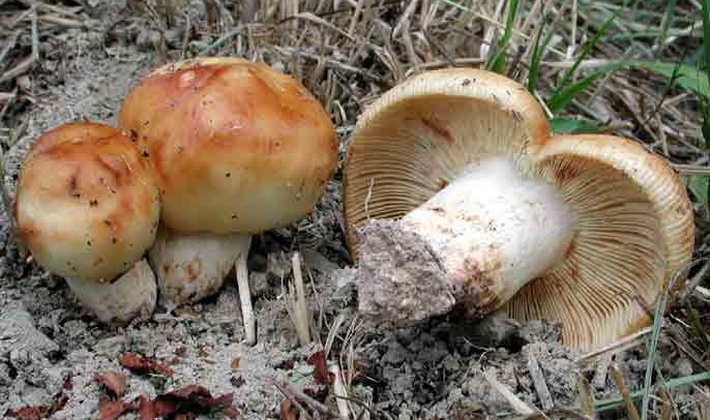
The flesh is dense, hard, white, then yellowish, brittle in mature mushrooms, with a herring smell and a bitter taste. In mature mushrooms, a rusty internal cavity forms in the leg.
Conditionally edible mushroom; in the West is considered inedible. Usually young mushrooms are collected with an unopened hat with a diameter of not more than 6 cm. Peels are removed from the value and after soaking for 2-3 days and boiling for 20-25 minutes. salt, less marinate.
Ecology and distribution:
This mushroom on a thin leg with a brown hat forms mycorrhiza with both coniferous and deciduous trees. It grows in deciduous, mixed (with birch) forests, less often in conifers, on the edge of the forest, on the edges, in the grass and on the litter. Prefers shady, damp places. Common in forests in Eurasia and North America, in Russia it is most common in the European part, in the Caucasus, in Western Siberia and in the Far East.
